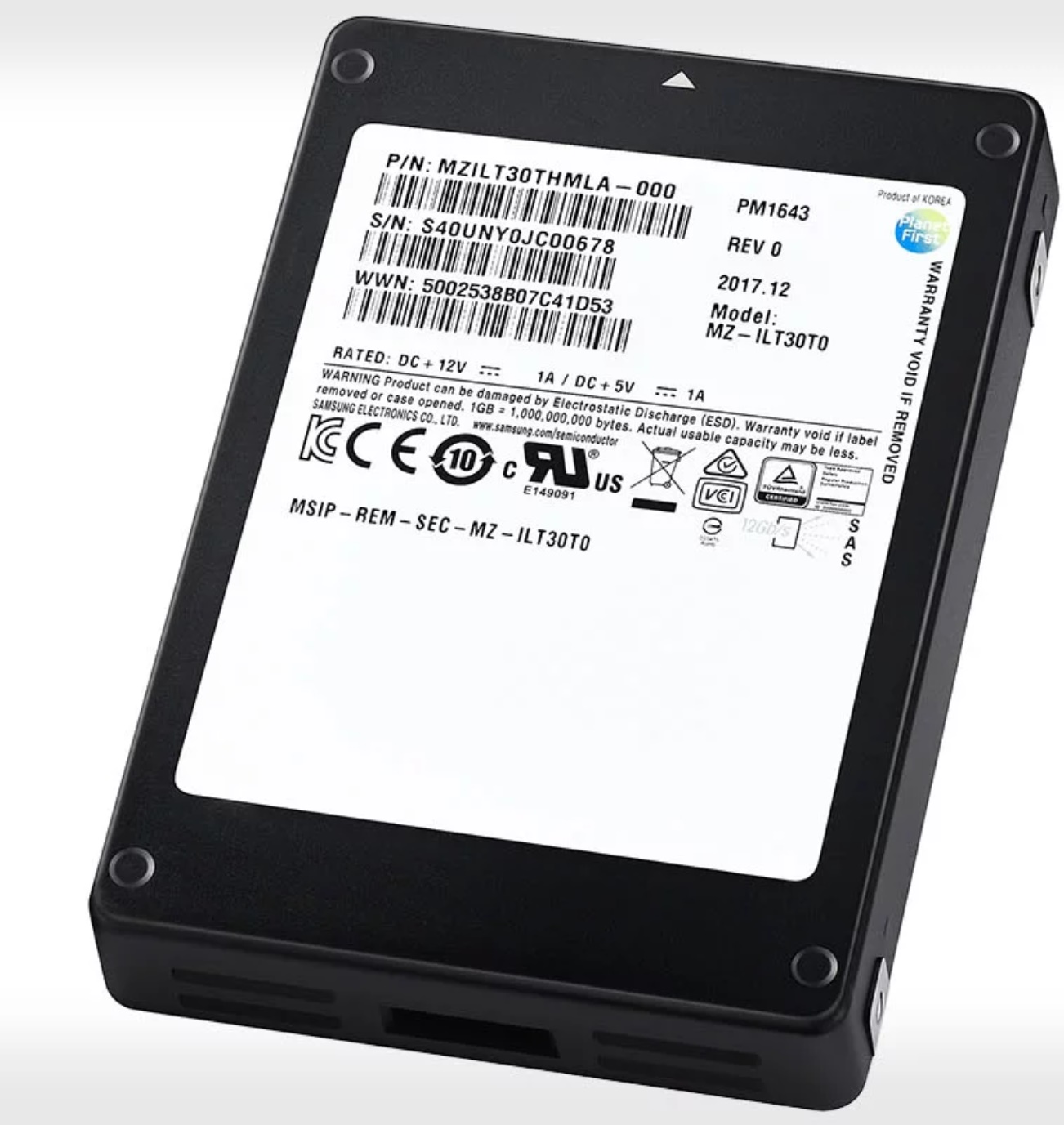Samsung’s new 30TB SSD: Should it target Windows 10 PC and Apple Mac users?

Samsung has recently announced the most capable SSD drive in the world. With a capacity of 30.72 Terabytes, or 30,720GB, Samsung’s claim goes beyond sales pitch, and straight to the actual Guinness World Record, should the company decide to submit it as such.
Capacity, however, is nothing without adequate read/write speed, and the PM1643 is not only far more capable than any other SSD on the market: it’s also 4 times as fast in random reads, and 3 times faster at sequential reads.
What does this mean to the uninitiated, is that accessing and manipulating data on Samsung’s new SSD is just as fast as working on a much smaller 1TB or 2TB SSD.
With that said, it should come as no surprise that the PM1643’s price tag is also expected to be the highest ever for a single SSD. While the price remains a mystery until an actual shipping announcement, existing 16TB SSDs are currently priced over $11,000 and up.
The fact that Samsung is marketing this new drive to enterprise customers and organizations, also means that the average consumers won’t even be able to purchase it, unless they are willing to fork over as much as they would for a mid-size SUV. Yet, the real big question is: should they, and how would that benefit the current consumer markets?
For decades, consumers and enterprise customers have coexisted as two separate entities, with two completely separate requirements and needs.
Consumers consider brand loyalty, design, functionality, and ease of use, primary tenets when shopping for new devices. This is why most manufacturers who cater to consumers, use terms such as “extreme performance”, and “extreme durability”, largely as buzzwords, with a loose definition that typically falls well within the expectations of 90% of regular customers, whose typical use does not include tracking satellites in the open, in a jungle during monsoon season, or running crypto-mining server stacks, from inside an Igloo, 10 miles from the North Pole.
Enterprise customers and government, however, are a different deal altogether. Performance is never enough, and durability is paramount, especially when building backbones to networks capable of handling millions of users and billions of requests every second of the day.
Google’s own servers, historically off-limits and known to be the most secure facilities in the world, aren’t exactly built out of the kind of hardware one can shop for at a local computer store. The equipment and infrastructure used by the biggest companies, and largest service providers in the world, are designed and manufactured specifically for volumes of labor that the average consumer will never comprehend.
The only exception to this rule is Nvidia’s Pascal-based GPUs, which is as close to “industrial grade” tech, as consumers can ever get, thus far. Still, to truly unleash, and harness the computing power of Nvidia’s GPUs, consumers are required to write and compile their own software capable of channeling the specific hardware, and use it for specific tasks. Other than this example, it’s hard to think of anything else that can be realistically purchased by the average Joe or Jane, with any level of day-to-day usefulness.
This is precisely why, for years, we have seen hard limits placed on consumer technology, such as 32GB RAM limitations of most consumer PC mainboards, which has been recently shattered by the Apple iMac Pro’s monstrous specs.
Yes, Samsung has shown that we can easily cram 30TB of data onto a single 2.5 inch form factor SSD drive, and plug it into a laptop like we would a thumb drive, but even if we could, would 30TB, or 60TB change the way consumers manage their daily tasks? What if the price tag were attainable?
Ready to shop?
Own the ultimate Windows 10-powered creative powerhouse: the all-new Microsoft Surface Studio.